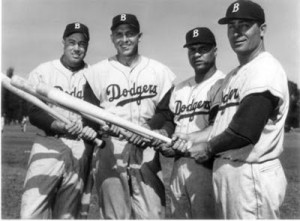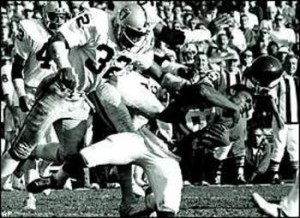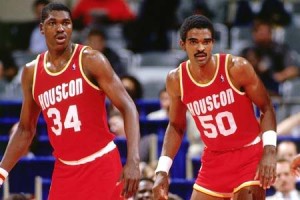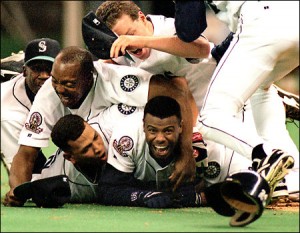Ten Sports Dynasties That Might Have Been

Despite having many of the top stars in Major League Baseballs, the Brooklyn Dodgers won only one World Series title.
Now that the 2011-12 NBA season will happen, sports prognosticators will return to projecting how many championships the Miami Heat will win. Forget about the disappointment of last season — this team has more than enough talent to bring home at least a few Larry O’Brien Trophies, right? That’s what people were saying about the Lakers in the ’60s, Mets in the ’80s, and Mariners in the ’90s (different trophies for the latter two, of course), yet they wound up with just two championships between them when all was said and done. The following would-be dynasties failed to meet expectations for a multitude of reasons — including injuries, team chemistry problems, free agency, drugs, and even a strike — leaving fans wondering what might have been had things gone a little differently.
1940s and ’50s Brooklyn Dodgers
Even if the Dodgers had won multiple World Series titles during this era, the franchise would’ve been more remembered for its role in integrating baseball by signing and promoting Jackie Robinson. More than just an inspiring figure in the Civil Rights Movement, Robinson was an ideal second baseman with tremendous speed, excellent contact ability, and exemplary defense. He played alongside Hall of Famers Roy Campanella, Duke Snider, Pee Wee Reese, Don Drysdale, and Sandy Koufax, one of the most talent-rich rosters in baseball history. From 1947 to 1956, the team won six NL pennants and the 1955 World Series, a resume worthy of NL dynasty status, but not MLB dynasty status.
1960s and ’70s Los Angeles Lakers
Before the Buffalo Bills, there were the Lakers. Sure, they had already won four of the first 10 NBA championships, but, with seven Finals losses in nine seasons during the 1960s and ’70s, they were the original poster child for second best. The primary culprit for their failures was the Celtics, who reeled off a remarkable 11 championships in 13 seasons. The Lakers also faced a 76ers team with perhaps the most dominant player off all time, Wilt Chamberlain, and a hungry Knicks team led by Willis Reid and Walt Frazier. When management figured out the mere presence of Jerry West and Elgin Baylor wasn’t enough, it added an older but still effective Chamberlain. The team finally got over the hump in 1973, after Baylor retired and Gail Goodrich had been added to the roster.
1970s Oakland Raiders

The Oakland Raiders won just one title in the 1970s despite being one of the NFL's most physical teams.
Without question, John Madden is historically one of the NFL’s elite head coaches. In just 10 seasons, he tallied seven first-place finishes in the AFL Western/AFC West Division and a .763 winning percentage, the best among coaches with 100 or more wins. Because of those accomplishments, along with his accomplishments as a commentator and video game icon, many people have forgotten his squads were on the cusp of achieving so much more. A defensive specialist, Madden coached some stingy units, but his team’s prolific offense, led by Daryle Lamonica and eventually Ken Stabler, received the most acclaim. The Dolphins and Steelers, the era’s two more memorable teams, however, were its kryptonite, shutting it down in three AFC Championship Games. The one year in which they defeated the Steelers to capture the AFC title, they went on to win Super Bowl XI.
1980s New York Mets
Rarely do teams feature two once-in-a-generation talents at the same time. The Mets had one in the heart of their lineup and one anchoring their rotation. Darryl Strawberry and Dwight Gooden captivated the baseball world in the mid-1980s when they were called up, immediately emerging as two of the best players at their positions. Additional roster moves during the time period from general manager Frank Cashen, such as trades for Keith Hernandez and Gary Carter, enabled the Mets to ascend to the top of the NL standings in 1986, as they won 108 games. Their victories over the Astros in the NLCS and Red Sox in the World Series will forever be remembered by baseball fans. Unfortunately, baseball fans will also forever remember the internal strife that transpired during the ensuing years, ending with the team’s ruination.
1980s Houston Rockets

The Twin Towers of Ralph Sampson and Hakeem Olajuwon were headed for greatness before Sampson was derailed by injuries.
Sports fans were buying Mets and Rockets stock en masse during the mid-1980s. The Rockets, having recently selected 7-foot-4 Ralph Sampson and 7-footer Akeem Olajuwon, The Twin Towers, with the No. 1 overall pick in successive years, grabbed national attention during the 1986 Western Conference Finals, when they stunned the defending champion Lakers in five games. They lost to the Celtics in a hard-fought six games during the Finals, but were expected to build on their success the following year. As it turned out, Sampson would play just 43 games because of a knee injury, and guards Lewis Lloyd and Mitchell Wiggins were suspended for the remainder of the season — and two more seasons — after testing positive for cocaine. Sampson was traded to Golden State 1987-88, and Olajuwon was left to lead a mediocre team until the championship years of the mid-1990s.
1980s and ’90s Oakland Athletics
To sustain a dynasty in baseball, a team must be built from the ground up. The A’s did just that during the 1980s, and saw the fruits of the labor in 1986, 1987, and 1988, when Jose Conseco, Mark McGwire, and Walt Weiss each won AL Rookie of the Year. In 1988, those three, along with Carney Lansford, Dave Stewart, and Dennis Eckersley, led the A’s to their first World Series appearance since the 1974, but they lost to the Kirk Gibson-inspired Dodgers. In 1989, with the return of Rickey Henderson, they swept the Giants, their Bay Area neighbors, in a series overshadowed by the Loma Prieta earthquake. In 1990, they were stunned by the Reds in four games. Their run, which included four division championships and three AL championships, ended with their elimination by the Blue Jays in the 1992 ALCS.
1990s Orlando Magic
A recent expansion franchise, the Magic were bestowed an embarrassment of riches during the early 1990s when they twice won the No. 1 overall draft pick. The first time around, in 1993, they selected Shaquille O’Neal, a strong, athletic center who assuredly would be an all-time great. In 1994, they selected power forward Chris Webber, but traded him to Golden State for guard and No. 3 overall pick Penny Hardaway, who had drawn comparisons to Magic Johnson. It took just two years for Shaq and Penny to reach the Finals. During that time, Shaq began feuding with Penny and coach Brian Hill, eventually ending in his 1996 offseason departure for Los Angeles, where he’d form a dynasty with Kobe Bryant, with whom he also feuded. Penny battled injuries during the rest of his career, preventing him from fulfilling his vast potential.
1990s Montreal Expos
The 1994 strike ruined baseball in Montreal forever. With local support dwindling, the team needed a memorable season to renew interest and secure funding for a new, more appealing stadium. The Expos were arguably the most talented team in baseball, sending five All Stars to the Midsummer Classic — Moises Alou, Marquis Grissom, Darrin Fletcher, Wil Cordero, and Ken Hill — and featuring future All Stars Larry Walker, John Wetteland, and Pedro Martinez. When the strike commenced on August 12, they had the best record in baseball, 74-40, and a six-game lead over the Braves. The team was on pace to draw 2 million fans, a benchmark they hadn’t reached in more than a decade. In the following seasons, players from the team dispersed, as ownership couldn’t afford their salaries. A new stadium deal was never struck, and the Expos morphed into the Washington Nationals in 2005.
1990s Seattle Mariners

The Seattle Mariners reached the ALCS only once in the 1990s despite having Ken Griffey Jr., Alex Rodriguez and Randy Johnson.
At one point during the 1990s, the Mariners had arguably the three best players in baseball — Ken Griffey Jr., Alex Rodriguez, and Randy Johnson. Their record-setting offense featured guys such as Tino Martinez, Jay Buhner, and Edgar Martinez, each of whom enjoyed career years in the Kingdome. Their proficiency in that area, though, was often neutralized by their pitching deficiencies. After Johnson, their rotation was substandard, and the bullpen was inconsistent. As a result, they won just two AL West titles and had no pennants or World Series titles to show for it. The trade of Randy Johnson to the Astros during the trade deadline in 1998 began the exodus of the big three. Surprisingly, the Mariners won 116 games, an AL record, without them in 2001, though postseason disappointment again followed.
1990s and 2000s Atlanta Braves
The Braves’ incredible rise from worst to first from 1990 to 1991 came with the development of their young talent, launching a period of success matched by few teams in baseball history. From 1991 to 2005, they reeled off 14 consecutive division titles, winning three NL pennants in the process. Yet, few baseball fans can get over the fact the team took home just one World Series title. During most of those years, Greg Maddux, Tom Glavine, and John Smoltz formed the most intimidating trio of starting pitchers in baseball, dominating during the steroid era. Steve Avery and Denny Neagle, also excellent pitchers, rounded out an almost flawless rotation. The lineup wasn’t bad either, with MVP winner Chipper Jones and MVP caliber players David Justice, Fred McGriff, and Andres Galarraga driving in a bulk of the team’s runs. Of course, the Twins, Blue Jays, and Yankees weren’t exactly devoid of talent either.
This article is reprinted with permission from Online Certificate Program.









